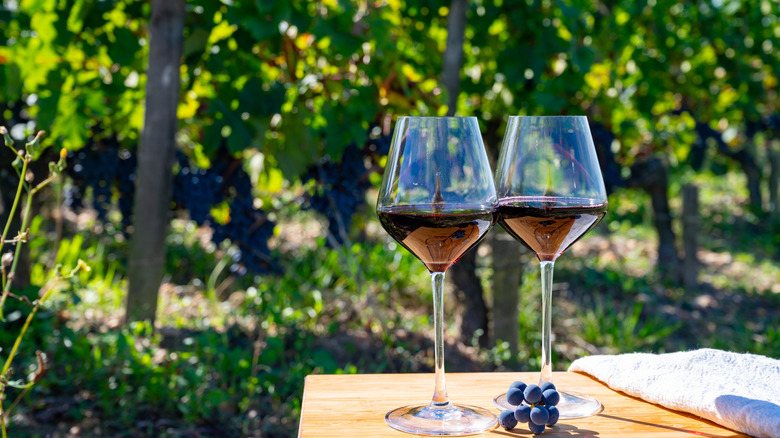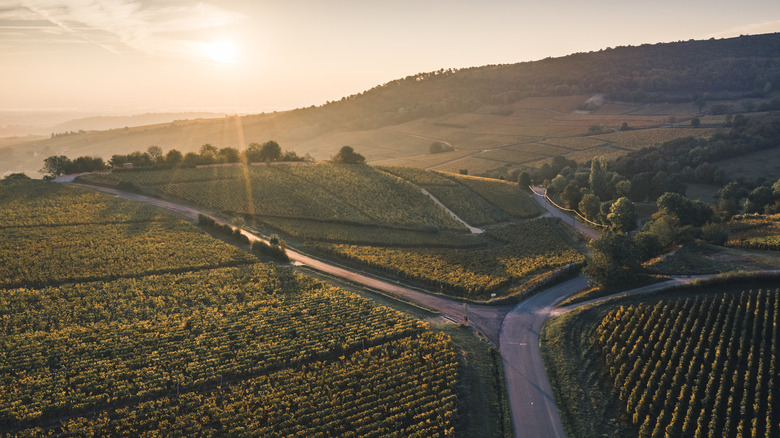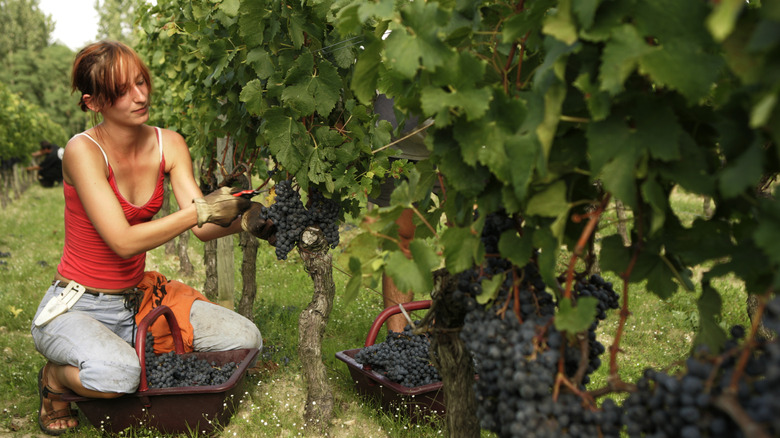The French Wine Tradition That Shocks Travelers, According To Rick Steves
Getting into wine can be a daunting adventure at the best of times. Many of us enjoy a glass or two with a meal, but developing your palate takes practice and an open mind. Then there is the perceived snobbery that still dogs wine lovers, a stereotype that is still perpetuated in movies and TV shows. This combination of factors gives the impression of a rarified and exclusive world, one that might make a novice approach a wine vacation in France with some trepidation. It may sound a little over-the-top, but wine is weaved deeply into the identity and culture of France. But one French tradition that confuses some travelers, according to Rick Steves, is fundamental to the taste of wine: terroir.
Simply put, terroir roughly translates to a wine's "sense of place." That might sound a little hazy, but it makes sense. France is a large nation and its wine producers are spread far and wide, from the vineyards of Champagne in the cooler northern part of the country to the sun-kissed hills and valleys of Provence on the Mediterranean coast. As Steves notes (via his website), " Two wines can be made of the same grape, but be of very different character because of their terroir." France's diverse geography contributes to this factor, which is why French wine is labeled by region rather than the variety of the grape. But what are the elements of terroir, and how might it affect your enjoyment of the wine?
Terroir is made up of three main aspects
Wine experts believe that a truly good wine should reflect its region, from the world-renowned Loire Valley to the under-the-radar region of Jura near the Swiss border. The environment in which a grape grows has a profound influence on the wine it produces. As Rick Steves goes on to say while discussing terroir, "A real Chablis made from the Chardonnay grape is better than Chardonnays made elsewhere." Terroir-driven wines are not unique to France, but it is a French term that encompasses three main factors: Climate, soil, and terrain, plus the more disputed aspect of the techniques used by vintners when handling and producing the wine. The terroir is a way of identifying and celebrating the uniqueness of certain regions, which is why some wines from single vineyards cost such a pretty penny.
Climate is one of the most important aspects of how a wine will turn out because the overall conditions have an impact on how the fruit ripens. Grapes that grow in a cooler region such as Burgundy will become more acidic, resulting in a lighter and fresher wine that has less alcohol content. Meanwhile, fruit that basks in warmer climes like the Rhone Valley becomes much riper and juicier, resulting in a generous full-bodied wine that is higher in alcohol (due to the extra sugar content), tannins, and richer flavors and aromas. Yet while climate is crucial, it provides a larger backdrop for the other factors to lend their input to a wine's terroir.
Terrain, soil, and the human element that defines a wine
The terrain and soil in which a grape grows are also important. In cooler regions where the grapes are exposed to more changeable weather, vineyards are often based on south- or east-facing hillsides where the fruit can receive the most sunshine. Altitude and micro-climates influenced by geographical features such as rivers and the ocean can also affect the ripening and freshness of the grapes.
Different soil conditions contribute to the flavor and texture of the finished wine because it can influence the balance, acidity, and mouthfeel when you take a sip. The clay-rich soil of the Pomerol region is well-suited to Merlot grapes, retaining moisture and resulting in a soft and well-rounded wine. Elsewhere, some of the world's best wines are produced in areas like Burgundy with limestone soil, which can drain well to avoid disease in the plants while also holding enough water to sustain the fruit during dry spells. This combination contributes to both a light and fresh wine with pleasurable mineral notes.
Lastly, there is the human factor, which can entail a variety of aspects including traditional wine-making methods used in a particular region, the type of cask used to store the wine, and the length of the aging process. All these things contribute to the scary notion of terroir, which most likely won't matter a jot to the casual wine drinker. But in a country with such a proud wine heritage like France, it is at least worth knowing the basics.


